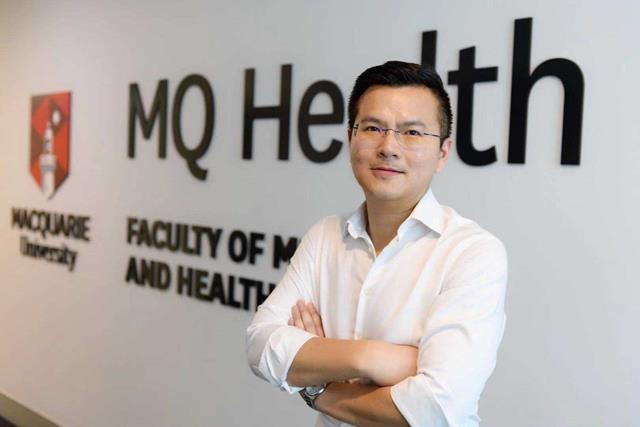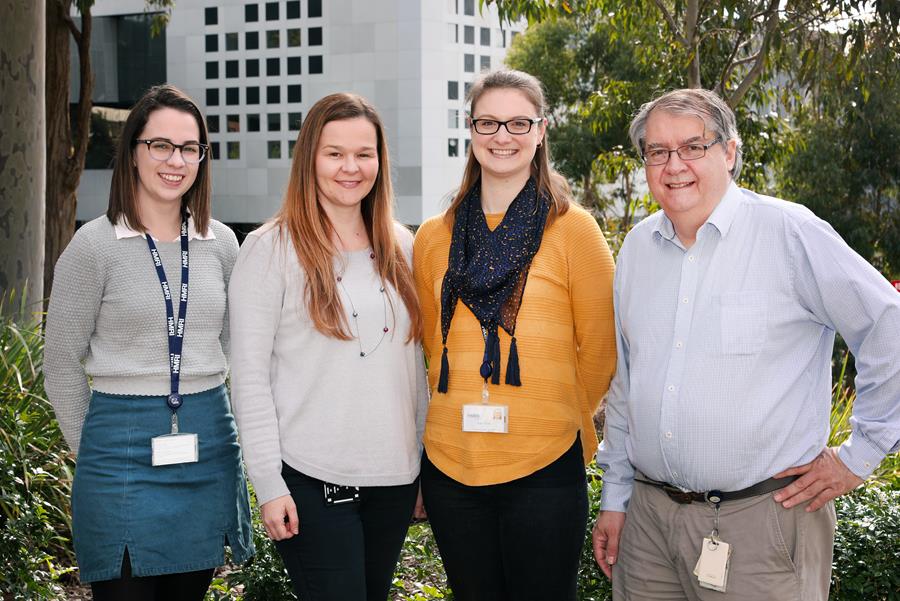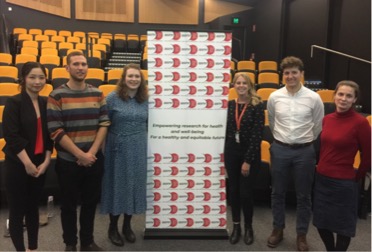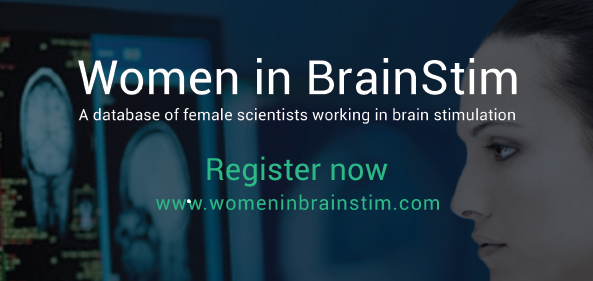September 2019 Newsletter
by Barbora Fulpova, Sharn Perry & Helena Huang, 07 Sep 2019
Update on ABA EMCR network activities
We are excited to bring you the spring issue of the ABA EMCR Network Newsletter, starting with an update on recent ABA EMCR Network activities. We have teamed up with the EMCR Forum of the Australian Academy of Science to tackle the issue of poor mental health faced by our EMCRs. We bring you our coverage of the ASMR Medical Research Week which took place in June, where brain scientists showcased and dazzled with their research findings all over Australia. We have for you their stories as told by the enthusiastic voices of the researchers themselves. We have the pleasure to introduce to you two interesting researchers: an EMCR who uniquely combines physiotherapy and neuroscience, and a PhD student whose work champions the link between architecture and emotions. Last but not least, we bring you a student’s perspective on the 6th Australian EMBL PhD course.
We hope you enjoy this issue of the ABA EMCR Network Newsletter. As always, if you have an interesting brain science story to tell or wish to advertise for brain science positions or events here, we warmly encourage you to make a submission.
On behalf of the Brain Science Network Steering Committee,
Barbora, Sharn and Helena
ABA EMCR Network tackles poor mental health in academia
In April this year, we joined forces with the EMCR Forum of the Australian Academy of Science to make a submission to the Productivity Commission’s inquiry into the effects of mental health. This inquiry is examining the impact of mental health on Australians’ ability to participate in the workplace and the community, as well as its flow-on effects on Australia’s economy and productivity.
The academic environment is hyper-competitive and chronically stressful. Our EMCRs are highly trained and are typically well respected and regarded as being successful by the general public. However, in the face of a myriad of stressors unique to EMCRs in the STEM sector—including a shortage of academic positions that is further compounded by an expansion of the number of PhD graduates in recent years, and long hours conducting work that is inherently prone to failures (for experiments are matters of trial and error by their very nature)—there is no question that our EMCRs are deeply mired in fertile ground conducive to the development of an unhealthy and unproductive mental landscape.
In this submission, we brought to the forefront the fact that the productivity and the long-term sustainability of the academic STEM sector is under serious threat. We highlighted the very real issues faced by EMCRs every day including overwork, job insecurity and the ineffective responses at the organisational level to the causes of poor mental health. We proposed that a review of the mental health of the STEM workforce in Australia is urgently needed, and made several recommendations including:
- establishing a national program to assess the mental health of workers in the academic STEM sector, including students and researchers at different career stages
- establishing support systems such as a national taskforce to educate employers on how to support productivity while managing the health risks associated with overwork
- normalising discussions about mental health issues in academia to reduce stigma
- creating realistic expectations and reasonable workloads in the STEM academic sector.
Stress and poor mental health are very much part of the modern academic culture. It will take time and work to change this prevalent narrative, but there is no time like the present to make a start.
ASMR Medical Research Week 2019
ASMR MRW ® is a flagship activity for the Australian Society for Medical Research (ASMR). This annual event takes place during the first week of June and is a major highlight in the Australian medical research calendar. ASMR MRW ® features a national tour by the ASMR medallist (this year Dr Elizabeth Finkel), as well as various community outreach activities and professional development workshops around the country. Importantly, ASMR MRW ® is also an occasion for medical researchers across Australia to showcase their work at their regional ASMR event.
From neuroinflammation to nanoparticle drug delivery that crosses the blood–brain barrier, this year brain scientists across the country impressed at ASMR MRW ®. We tracked down the literal brains behind the amazing brain science and asked them to tell their stories in their own words. Following are selected highlights.
Brisbane | Queensland Health and Medical Research Week Award recipient | Dr Lisa Gillinder (Mater Centre for Neurosciences)
Discoveries in autoimmunity leading to improved care for patients with epilepsy
Epilepsy affects more than 250,000 Australians, with many of these cases being refractory to conventional therapies. Many of these patients are considered potential epilepsy surgery candidates as this is currently the gold standard treatment for refractory focal epilepsy, ultimately resulting in the greatest chance of achieving seizure freedom, or reduction, following failed implementation of medication. However, one cause of epilepsy which has not been explored until recently is autoimmunity. This condition occurs where antibodies from the immune system, instead of protecting the brain, attack it and generate seizures. Identifying this as a potential cause of someone’s epilepsy is particularly important as surgery is unlikely to be successful in autoimmune cases, and its presence may explain some surgical failures.
Our preliminary research defined a specific cluster of seizure symptoms that are associated with autoimmunity in epilepsy patients. This is vital information for the treating neurologist to help identify which patients should undergo autoimmune screening, as these tests are currently very expensive and not typically offered to epilepsy patients as part of the diagnostic workup. Our current research aims to define the clinical phenotype associated with the presence of these antibodies in a large group of chronic epilepsy patients. This involves a multimodality approach to diagnosis that will test the hypothesis that these antibodies are associated with a definable clinical phenotype, similar to what was identified in our earlier research. This will enable us to generate diagnostic criteria similar to what exists for other immune related neurological conditions, including autoimmune encephalitis.
Patients will undergo thorough clinical evaluation guided by the stereo-electroencephalography methodology which is an epilepsy surgery technique used to localise the source of seizures within the brain (epileptogenic zone). The same analytical method will be applied in our research to determine which regions of the brain are affected by these antibodies. This involves evaluation of large amounts of information with a focus on seizure symptoms (semiology) and scalp electroencephalographic (EEG) recordings in order to define the electroclinical features of these epilepsies. Advanced neuroimaging techniques will also be used to investigate for inflammatory abnormalities in these cases.
The reason this work is vitally important is that in our earlier research we demonstrated a clear improvement in seizure control when these patients were treated with immunotherapy instead of conventional treatments. This response was so strong that some of the patients even became seizure free. If our hypothesis is correct and we can define the clinical symptoms associated with antibodies in epilepsy, this will change the clinical approach to chronic epilepsy so that these patients with autoimmune epilepsy can be more easily diagnosed and receive appropriate treatment for their condition. Many patients who were previously told they had exhausted all therapeutic options will have a new possibility for seizure freedom and not undergo surgery inappropriately. Studies can also be conducted to determine which immunotherapies are most effective. This would have health-cost savings and may one day result in an effective cure for this subgroup of epilepsy, that currently has limited treatment options available.

Pictured: Dr. Binyang Shi
Sydney | ASMR NSW Scientific Meeting | Dr Bingyang Shi (Macquarie University)
Nanoparticle drug delivery to the brain
I am an NHMRC-ARC Dementia Research Development Fellow and group leader of Brain Drug Delivery Research in the Macquarie University Centre for Motor Neuron Disease Research. My research goal is to address a major challenge in the treatment of brain diseases; the successful delivery of therapeutic agents across the blood–brain barrier (BBB). The BBB acts as a cellular barrier that prevents toxins, foreign materials and other dangerous molecules from entering the brain, but as a consequence it poses major challenges for getting therapeutic molecules into the brain. To overcome this, my research program is developing advanced brain drug delivery systems to efficiently transport the therapeutic drug across the BBB into the brain for high-performance brain disease therapy.
More than 400,000 Australians currently live with dementia with a further 1.5 million involved in their care. Additionally, each year, some 1700 Australians are diagnosed with brain cancer and another 400 with motor neuron disease (MND). Currently, there are more than 100 ongoing clinical trials focused on these largely untreatable diseases. Although many promising drug therapies are emerging, poor BBB penetration or lack of targeting capability limits their potential for brain disease therapy. To unlock their potential, together with my research team, I have successfully developed a new library of brain drug delivery systems that can efficiently load and deliver multiple drug therapeutics past the BBB to target pathogenic pathways in brain disease including bio-nanoparticles (Bio-NPs) and glucose-nanoparticles (Glu-NPs). Below I outline Bio-NPs and Glu-NPs as examples to introduce my research.
We adapted the red blood cells of patients living with brain cancer, to make an individualised Bio-NP delivery system, which, by using a patient’s own cells, avoids potential immunological and toxicity problems. We developed a unique ‘two birds, one stone’ approach in which one targeting agent (rather than two) was used to pass the BBB and target tumour tissues in the brain. This minimises off-target problems often caused when different targeting agents interfere with each other. Accordingly, our Bio-NP system can overcome two bottle-neck issues (clinical safety and off-target problem) in the drug therapy of brain tumours.
Our other innovative brain delivery system (Glu-NPs) allows BBB penetration and selective neuronal targeting, addressing one of the main challenges in drug-based neurodegenerative disease therapy. Currently, we are in the lab-based experiment stage, determining the delivery of siRNA and CRISPR based therapeutics with Glu-NPs in the brain of a mouse disease model to assess the therapeutic potential. This novel technology has the potential to change the treatment of neurodegenerative diseases and, as such, we have been successful in obtaining national funding and international collaboration to investigate the application of this technology in neurodegenerative disease therapy. In addition, I have established a brain drug delivery company based on our well-established brain drug delivery technologies, to provide support for researchers and industry brain drug delivery across Australia, China and South Korea.

Pictured left to right: Gabrielle Crombie, Dr Hannah Palliser, Dr Julia Shaw and Professor Jon Hirst. Photo taken by Mark Rothfield, Media Relations HMRI
Newcastle | Newcastle Satellite Scientific Meeting | Dr Julia Shaw (Hunter Medical Research Institute)
What’s neurosteroids got to do with it? Why being born preterm matters and what I’m doing about it!
I’m a postdoctoral researcher working within the Mothers and Babies Research Centre at the Hunter Medical Research Institute (HMRI), which is an affiliation of the University of Newcastle. My research examines the role of reduced neurosteroid levels following preterm birth and its effect on brain development of the baby. In particular, I focus on long-term impairments that persist into childhood and beyond. My desire to understand how the brain develops from in the womb until adulthood is what got me into research, and after graduating with my Bachelor of Biomedical Science (Honours First Class) I opted to forever be a student and choose research as my career. I was awarded my PhD in Experimental Pharmacology from the University of Newcastle in January 2018 and I am now beginning to find my feet as an independent researcher.
During my PhD, I focused on how a premature loss of placental neurosteroids results in diffuse white matter injury in the childhood brain following preterm birth. Working alongside other basic scientists, neonatologists and obstetricians, I identified that the hippocampus and cerebellum are particularly vulnerable to these disturbances in brain development and may play a contributing role in the increased rate of behavioural disorders, such as attention deficit hyperactivity disorder (ADHD) and anxiety, that are more common following preterm birth. I’m currently extending this work, moving ever closer to the illustrious ‘bedside’ by investigating the use of a neurosteroid-replacement therapy to prevent these adverse outcomes of preterm birth on brain development. There are a variety of synthetic derivatives of allopregnanolone, whose safety and efficacy have already been proven in children. A daily injection, from birth until term equivalent could bring a child’s neurodevelopmental levels up to par.
In Australia, preterm birth occurs in 8.6% of pregnancies, and thus affects a staggering ~26,880 babies per year. When a baby is born premature (before 37 weeks) it is exposed to the outside world much earlier than normal, and without the appropriate level of neurosteroid support, which ultimately can result in impaired brain development that affects behaviour and learning. One of the most important naturally occurring neurosteroids that is integral to fetal neurodevelopment is allopregnanolone. Allopregnanolone is supplied by the placenta throughout pregnancy, with levels reaching their highest towards the end of pregnancy. Once allopregnanolone passes from the placenta to the fetal brain, it promotes myelination and protects the brain from injurious stimuli, such as hypoxia. Magnetic resonance imaging of the brain of prematurely born babies (and even teenagers that were born premature!) shows that myelination is reduced, and we also know that at school age these prematurely born children experience poor behavioural outcomes, such as ADHD and anxiety, which in turn affects their learning abilities. As you can imagine the whole life trajectory of these children can be altered just as a result of being born a few weeks too early!
My work focuses on preventing this cascade of events from occurring by replacing allopregnanolone in the early neonatal period to those born preterm. I hypothesise that if we can maintain the late gestation levels of allopregnanolone during this susceptible period, then we can ensure optimal neurodevelopmental trajectories, including normal myelination, and that the onset of behavioural and learning disorders is prevented. The number of children affected by pregnancy compromises like preterm birth, which often goes hand-in-hand with postnatal stress for both mum and bub, is increasing. The adverse consequences for the child are becoming more recognised and the burden on the child, their family and broader society is well established. After many years investigating the neuroprotective role of neurosteroids in the developing brain, my group may now have a solution for reducing the impact of these often-unavoidable pregnancy complications.
The role of the placenta in fetal brain development, and how devastating the outcomes can be following an early loss of the placenta, is an important area of focus for us. If the placental neurosteroid environment can be mimicked following birth in babies that are born preterm, can we put brain development back on the right track? My team has the evidence to prove it! The potential of our proposed neurosteroid-replacement therapy to ameliorate the vulnerability these babies and children face, enabling them to reach their full potential, is what drives my day-to-day research. Ultimately, if we can see our therapy through to the bedside ensuring that every baby has the best start to life possible, then I’ll consider that the best day in the office imaginable.
Adelaide | ASMR SA Scientific Meeting | Ms Emma Sampson (University of Adelaide)
A new strategy for personalising treatment of depression
I joined the University of Adelaide’s Discipline of Psychiatry in early 2018 as a PhD student and began working on the PREDDICT study led by principal investigator Professor Bernhard Baune and working with study coordinator Dr Célia Fourrier and trial psychiatrist Dr Natalie Mills.
I wanted to be involved because the project was the first I’d come across where treatment was being personalised based on an individual characteristic observed at baseline, rather than using the more prevalent trial-and-error approach of antidepressant treatment allocation. In the PREDDICT study, participants have a high sensitivity test for C-Reactive Protein (CRP) levels before commencement of study medication. CRP is a marker of inflammation, and 30-50% of people with depression have been shown to have levels of CRP above the normal range. Indeed, inflammatory processes and markers have become a strong focus for researchers in not only depression, but other psychiatric disorders as well.
All PREDDICT study participants will take the antidepressant vortioxetine, but half of participants with elevated CRP levels will additionally take an anti-inflammatory medication, while the other 50% receive a placebo. The same will be true in the group who have CRP levels in the normal range; one half will receive the anti-inflammatory, while the other half receive a placebo, in addition to vortioxetine. We predict that this will allow us to demonstrate that there’s an advantage to testing patients’ CRP at the time of diagnosis with depression, and then offering a course of anti-inflammatory treatment to those with an elevated level only. We want to not only add additional treatments to a physician’s toolbox, but to also help distinguish when medications are unlikely to be of benefit, and save patients the time and risk involved with trialing them.
Additionally, the study’s focus on understanding the biological underpinnings of both the disease state and remission appealed to me. We take blood samples before and after treatment, and from analysis of these samples, we hope to be able to observe some changes occurring from the interventions in the different groups. We expect there to be a difference in inflammatory profiles, especially after anti-inflammatory treatment, but we also intend to conduct a transcriptome-wide gene expression analysis, which will hopefully give us more comprehensive oversight into the full picture of what is occurring. As we are currently completing the clinical trial phase of the project, we will soon begin this analysis and look forward to seeing the results.
In June this year I attended ASMR’s South Australian Scientific Meeting and was fortunate to receive the ‘ASMR PhD oral runner up award’ for my presentation on the PREDDICT study. The meeting was also a great opportunity to hear about other research happening locally, to find other researchers who I could potentially collaborate with in the future, and to consider different perspectives that I might be able to apply to my own research. I hope that by next year’s meeting, some conclusions from the PREDDICT study will be ready to share.

Pictured left to right: Zhen Zhou, Loic Auderset, Niamh Chapman, Catherine Foster, Matthew Armstrong and Barbora Fulopova
Tasmania | ASMR PhD Student Awards | Niamh Chapman (Menzies Institute of Medical Research)
Multimedia for delivering participant informed consent
The work I presented focused on the informed consent process for recruiting research participants. Effectively communicating research to achieve participant understanding is challenging, time-consuming, burdensome and often ineffective. My work compared a standalone multimedia consent process to the traditional paper-based approach delivered by a researcher, to compare the usability, efficacy and acceptability of both. The potential benefits of a standalone multimedia consent process are far-reaching. It potentially offers cost-savings as it would remove the need for designated research staff to conduct the consent process. Participant understanding of research requirements may also be improved as the process can be standardised to ensure each participant receives the same information, support participant autonomy in decision-making as they can choose what information to engage with, and overcome barriers associated with literacy and comprehension. It was a privilege to share this work with my peers and senior colleagues as an ASMR Medical Research Week finalist in Tasmania. It was particularly rewarding to have many researchers reach out after the awards to discuss their approach to consent processes and offer insight based on my research and experience.
(Twitter: @nchapmanTAS)
Tasmania | ASMR EMCR Awards | Carlie Cullen (Menzies Institute of Medical Research)
Insulation directs nerve cell communication within the brain
My research explores how oligodendrocytes, the myelinating cells of the central nervous system, can adapt to changes in neural activity even after they have fully matured. We have discovered that non-invasive brain stimulation leads to changes in the structure of mature myelin around axons and shortening of the nodes of Ranvier in adult mice which resulted in slower, but more synchronised action potential propagation across the corpus callosum. Before now, we did not know that it was possible for mature oligodendrocytes to adapt in this way. Participating as an ECR in the ASMR medical research week awards was an incredible yet humbling experience. Not only did I get to share my passion for science and my exciting data with a much broader audience, but I also got to experience the enthusiasm of my peers. I even managed to make new contacts and learn a few things along the way.
Brain science EMCR profiles
This week we’re featuring profiles of two talented EMCR Brain scientists - Dr. Brenton Hordacre, and PhD student Isabella Bower.
6th EMBL Australia PhD Course — student perspective
Australia is a member of the European Molecular Biology Laboratory (EMBL), which internationalises Australian life science research and builds a strong collaborative network for Australian researchers across Europe and Asia. This year, the EMBL Australia PhD Course was held at the University of Tasmania and gave Australia’s finest first- and second-year PhD students the opportunity to develop as researchers under the guidance of leading national and international scientists. Sueanne Chear, a second-year PhD student with the Wicking Dementia Research and Education Centre, told us about her experience:
It was a great experience attending the 2019 EMBL Australia PhD course that was recently held at the University of Tasmania, Hobart. During the course, I met reputable Australian and overseas speakers and thoroughly enjoyed their diverse range of topics—from bioinformatics to advanced microscopy and epigenetics. The speakers also gave us insights into their career paths and backgrounds, which are both inspiring and helpful in carving our future career path in science.
One of the interesting presentations was delivered by Professor Ross Cagan from Icahn School of Medicine at Mount Sinai, who shared his recent exciting work in personalised cancer therapeutics. Professor Cagan and his team used sequencing data from a treatment-resistant colorectal cancer patient to reproduce the complex tumour mutations and environment in Drosophila. Through the application of the patient-specific Drosophila models in robotics-based high-throughput drug screening, a novel combination of drugs—trametinib and zoledronate—which improved survival of the patient was identified. This proof-of-concept study represents a novel and personalised approach to discover therapeutics.
The EMBL course provided a good mix of lectures and practical workshops where we were exposed to various model organisms, transcriptomics, programming in R, good scientific practice and scientific communication. These lectures and workshops are very useful in helping me to advance in my research. Other highlights of the course were visits to the Australian Antarctic Division and the Tasmanian Devil sanctuary site, which were refreshing and fun.
We also had the opportunity to share our research through the 3-minute thesis and poster presentations held during the course. I enjoyed the presentations as they serve as platforms for intellectual exchange of ideas and making new contacts. I also had the opportunity to connect with participants of similar research interests and discussed potential collaboration on the use of a novel device in cell culture which can benefit research conducted in our lab. To me the EMBL course was a breath of fresh air and I am very grateful for the opportunity to participate in the course.
Grant opportunities
Please contact the EMCR Network if you would like to advertise grant opportunities here.
Employment and other brain science opportunities
Please contact the EMCR Network if you would like to advertise positions here.

